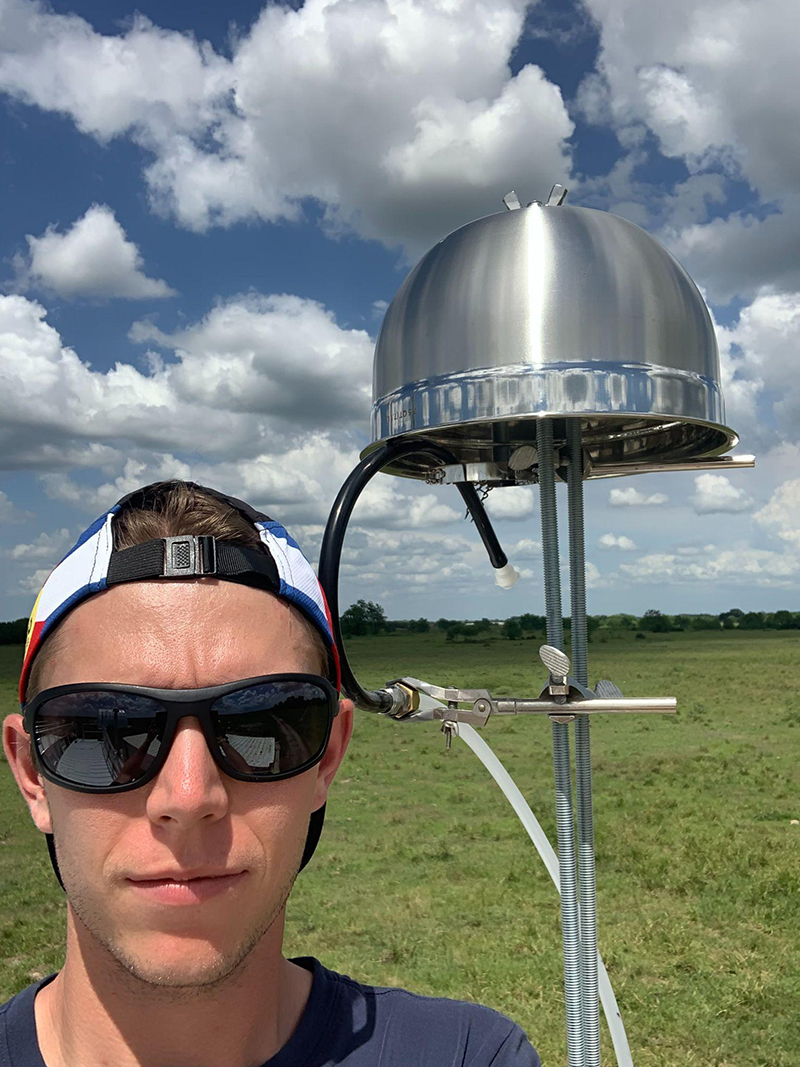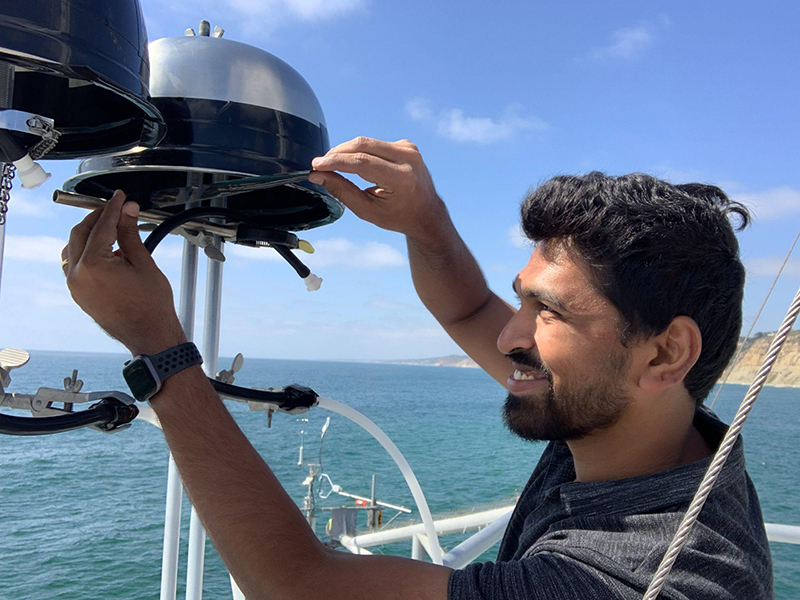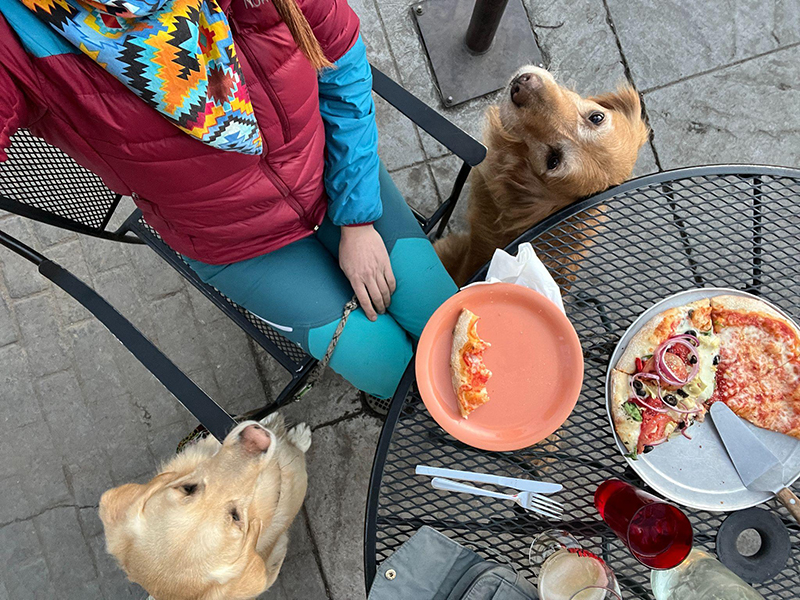Ramping Up the ARM Odyssey: A Tale of Ice-Nucleating Particles Over the Globe
Published: 27 October 2023
Editor’s note: Jessie Creamean, a research scientist at Colorado State University and an ARM mentor for ice-nucleating particle collection and analysis, sent in the following update.

Scientists and aspiring mad weather and climate geniuses, gather ’round! Today, we’re diving headfirst into a realm where filters, freezing temperatures, and ice-cold antics collide: the mesmerizing world of ice-nucleating particles (INPs) and their chaotic journey to stardom within the DOE ARM aerosol measurement suite. While I can’t top the comedic performance of Travis Guy’s recent blog about packing up after the Surface Atmosphere Integrated Field Laboratory (SAIL) campaign, I shall try my wholehearted best to provide some entertainment sprinkled with a little bit of science.
Picture this: You’re sipping a steaming cup of cocoa while wrapped in a blanket, cozily watching snowflakes dance outside your window. Little do you know that those delicate snowflakes are the result of a game of freeze tag in the clouds above that’s been going on for millennia. And who are the instigators of this frosty frolic, you ask? None other than those persnickety INPs!
Let’s take a trip to the origins of the INP mentor program at the Southern Great Plains (SGP) atmospheric observatory and ARM Mobile Facility (AMF3) previously situated at Oliktok Point, Alaska (OLI), where the coldhearted INPs have made a name for themselves. It’s like an INP party where they gather, chat about the latest temperature drops, and plan their freezing shenanigans. But fear not, dear readers, for your fellow INP mentors, Jessie Creamean (myself) and Thomas Hill, and fantastic associate mentors Carson Hume and Tim Devadoss, who hail from Colorado State University, have infiltrated this chilly soiree, armed with filters and an ice nucleation spectrometer (INS).
Our mission: to catch INPs red-handed—or should we say, ice-cold—at a growing number of ARM sites and current/upcoming field campaigns.
The process is simple (well, sort of): Filters are the detectives at the scene, collecting evidence in the form of aerosols. These particles then head back to the INS headquarters at Colorado State University for a chilly interrogation. The result? A spectacular collection of data available to the ARM user community showcasing the INP concentration spectra over a temperature range that could make a snowman shiver (but for real, from approximately 0 degrees Celsius down to about minus 30 degrees Celsius).

Now, let’s talk about the locations. It’s as if INPs have a serious case of wanderlust. They’ve been spotted causing a ruckus at SGP and OLI, and even crashing a party near Crested Butte, Colorado, where ARM conducted the 21-month SAIL campaign. Rumor has it, INPs can’t resist the allure of Texas BBQ, because they’ve also been caught in the Houston area for the TRacking Aerosol Convection interactions ExpeRiment (TRACER). Those INPs sure know how to have a good time!
But the real pièce de résistance in this icy carnival is the ongoing Eastern Pacific Cloud Aerosol Precipitation Experiment (EPCAPE). This grand spectacle promises a yearlong extravaganza of INP mayhem in northern San Diego, California. And if you’re a true INP aficionado, you’ll be thrilled to know that AMF3 is set to dazzle us all once again when it heads to Alabama’s Bankhead National Forest (BNF) starting in late 2023.
But wait, there’s more! Filters collecting INPs will appear at the Cloud And Precipitation Experiment at Kennaook (CAPE-K) starting in early 2024 in Tasmania and will return to the northernmost part of the United States at the North Slope of Alaska (NSA) observatory by late 2024.
So, what’s the moral of this frosty tale? INPs are like the life of the party in the world of atmospheric particles. They’re the pranksters behind your clouds and the architects of intricate snowflakes and raindrops. And while their antics might be coldhearted, we can’t help but appreciate their mischievous charm.

So, dear readers, whether you’re a snowflake enthusiast, a weather guru, or just someone who loves a good freeze-frame moment, remember to keep an eye on those INPs. They’re the true masters of freeze tag, and they’re always up for a frosty escapade. Just don’t forget your filters and spectrometers—you never know when you might stumble upon an INP gathering that’s cooler than you could ever imagine.
Stay frosty, science enthusiasts! ?️❄️?
Want to Use the INP Data?
INP concentration data are ready to use from TRACER, OLI, and SGP. Access these data from the ARM Data Center. (Go here to create an account to download the data.)
SAIL INP data are available but currently being reprocessed. Please check back with the ARM Data Center for the reprocessed SAIL data, along with data availability from current and future sites.
For more information about the INS, see its web page and instrument handbook.
Please contact Creamean and Hill with questions or comments about the data.
To cite the data, please use doi:10.5439/1770816.
Keep up with the Atmospheric Observer
Updates on ARM news, events, and opportunities delivered to your inbox
ARM User Profile
ARM welcomes users from all institutions and nations. A free ARM user account is needed to access ARM data.


















